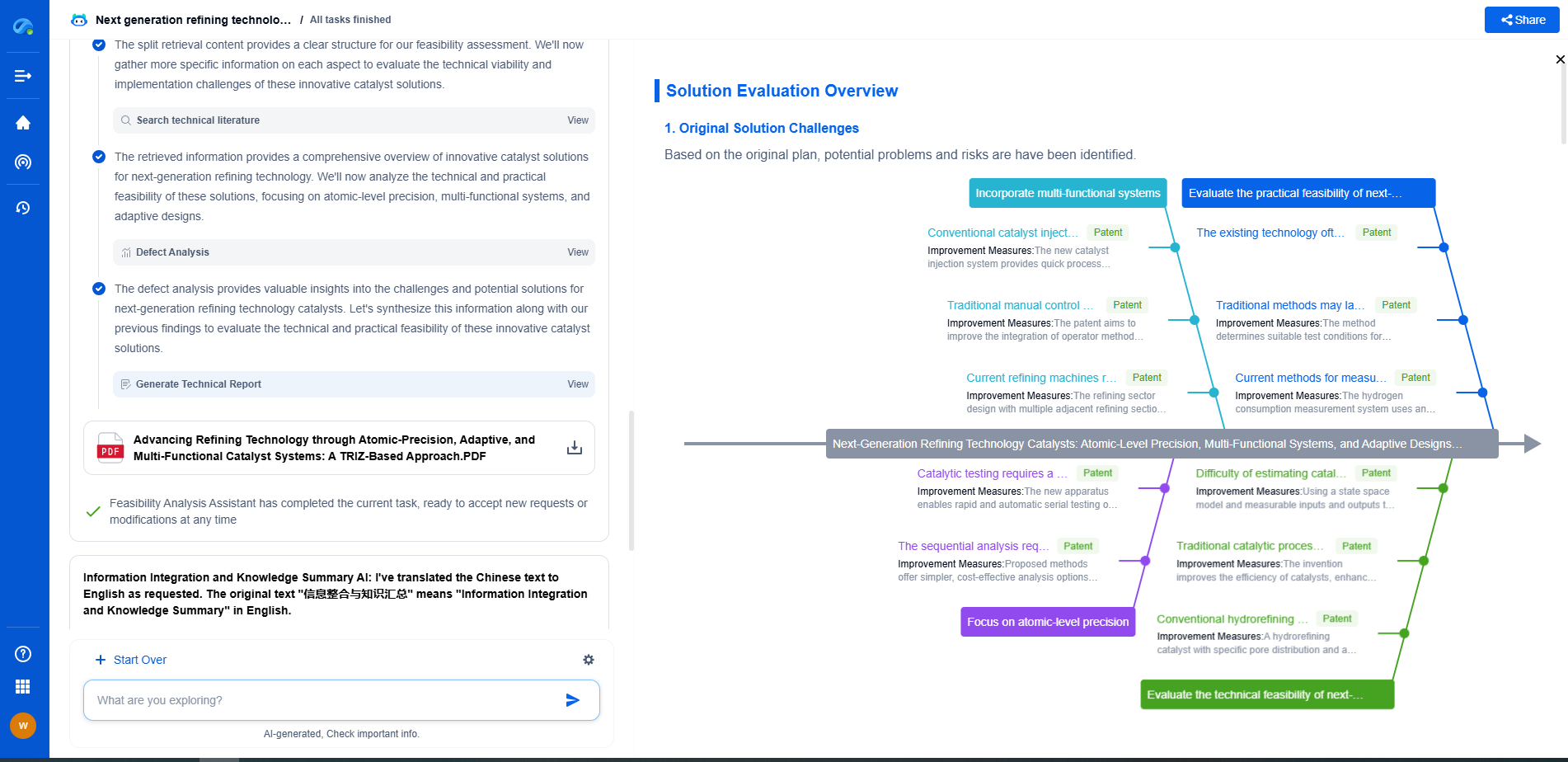SCARA vs Delta robot: Key differences explained
JUN 26, 2025 |
In the world of robotics, SCARA and Delta robots are two prominent types that are essential in various industrial applications. Each of these robots has unique characteristics and is designed for specific tasks. Understanding the key differences between SCARA and Delta robots can help industries make informed decisions about which type is best suited for their needs. This article delves into the fundamental distinctions between these two robotic systems.
Mechanical Design and Structure
SCARA Robots
SCARA stands for Selective Compliance Assembly Robot Arm. This type of robot is characterized by its rigid vertical movement and flexible horizontal motion. SCARA robots have a cylindrical work envelope, which allows them to perform tasks that require a high degree of precision in the horizontal plane. The arm's design consists of parallel rotary joints for the shoulder and elbow, providing a streamlined and efficient range of motion. This makes SCARA robots ideal for tasks such as assembly operations, where they can move parts quickly and accurately.
Delta Robots
Delta robots, on the other hand, have a distinct mechanical design that resembles a spider-like structure. They consist of three arms connected to universal joints at the base. The design allows for exceptional speed and precision, particularly in pick-and-place applications. Delta robots have a dome-shaped work envelope and are capable of high-speed movements with low inertia, making them suitable for tasks that require rapid and repetitive motion, such as packaging and sorting.
Operational Capabilities
Speed and Precision
When it comes to speed, Delta robots are generally superior due to their lightweight and minimalistic design. They can execute tasks at a significantly faster rate compared to SCARA robots, which is why they are often deployed in environments that require swift operations. SCARA robots, while not as fast, excel in precision and repeatability, making them favorable for operations that demand meticulous assembly and handling.
Payload Capacity
SCARA robots typically have a higher payload capacity than Delta robots. This makes them more suitable for tasks that involve handling heavier objects. Delta robots, optimized for speed, tend to have a lower payload capacity, which limits their application to lighter materials. However, the trade-off is often acceptable in industries where speed is prioritized over payload.
Applications in Industry
SCARA Robots in Action
SCARA robots are predominantly used in industries such as electronics, automotive, and consumer goods for assembly tasks. They are highly effective in applications that require the placement of components with high accuracy. Due to their design, they are also well-suited for tasks such as soldering, screwing, and inserting components into tight spaces.
Delta Robots at Work
Delta robots shine in industries where speed and efficiency are paramount. They are extensively used in the food and beverage, pharmaceutical, and electronics sectors for tasks such as sorting, packaging, and palletizing. The ability of Delta robots to handle small, lightweight items at high speeds makes them indispensable in production lines that demand rapid throughput.
Cost Considerations
When evaluating the cost implications of SCARA and Delta robots, several factors come into play. SCARA robots are generally more cost-effective for applications that require precision and moderate speed. They tend to have a simpler design and are easier to maintain. Delta robots, while potentially more expensive due to their sophisticated design and high-speed capabilities, offer a faster return on investment in high-volume production environments.
Conclusion: Choosing the Right Robot
The decision between SCARA and Delta robots ultimately depends on the specific needs of an industry. If precision, higher payload capacity, and cost-effectiveness are priorities, SCARA robots are an excellent choice. Conversely, if speed and high-frequency operations are more critical, Delta robots are the preferred option. By understanding the key differences between these two types of robots, industries can enhance their operational efficiency and optimize their robotic investments.
Ready to Redefine Your Robotics R&D Workflow?
Whether you're designing next-generation robotic arms, optimizing manipulator kinematics, or mining patent data for innovation insights, Patsnap Eureka, our cutting-edge AI assistant, is built for R&D and IP professionals in high-tech industries, is built to accelerate every step of your journey.
No more getting buried in thousands of documents or wasting time on repetitive technical analysis. Our AI Agent helps R&D and IP teams in high-tech enterprises save hundreds of hours, reduce risk of oversight, and move from concept to prototype faster than ever before.
👉 Experience how AI can revolutionize your robotics innovation cycle. Explore Patsnap Eureka today and see the difference.
- R&D
- Intellectual Property
- Life Sciences
- Materials
- Tech Scout
- Unparalleled Data Quality
- Higher Quality Content
- 60% Fewer Hallucinations
Browse by: Latest US Patents, China's latest patents, Technical Efficacy Thesaurus, Application Domain, Technology Topic, Popular Technical Reports.
© 2025 PatSnap. All rights reserved.Legal|Privacy policy|Modern Slavery Act Transparency Statement|Sitemap|About US| Contact US: help@patsnap.com

